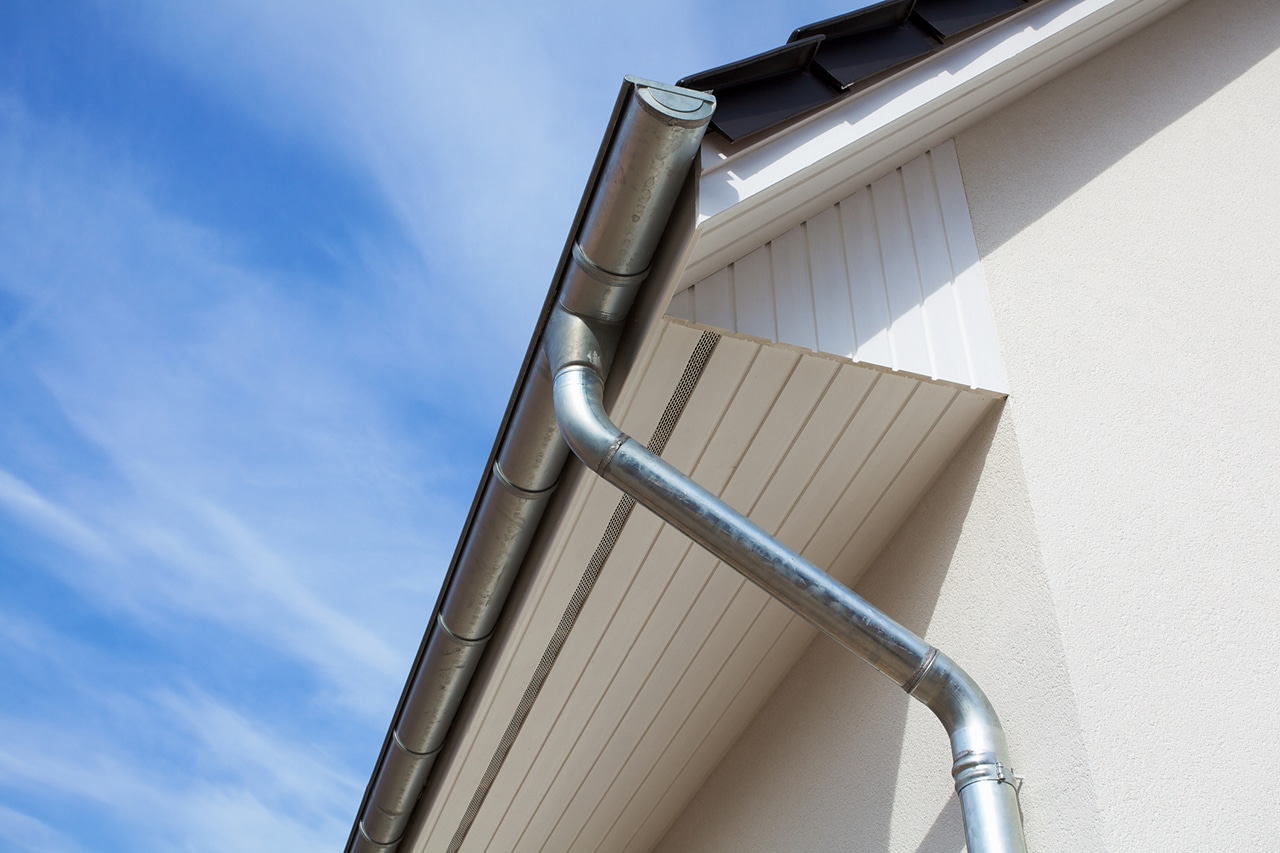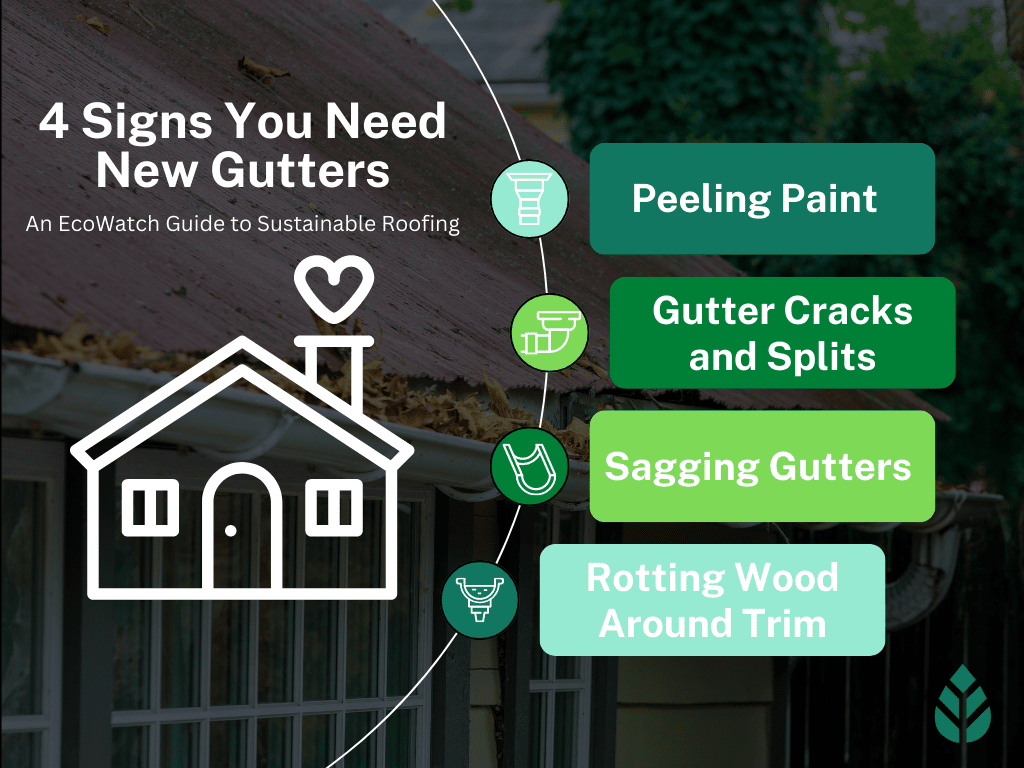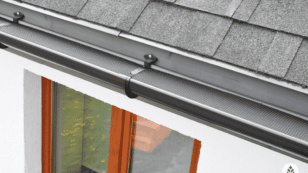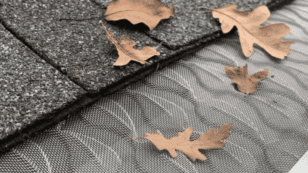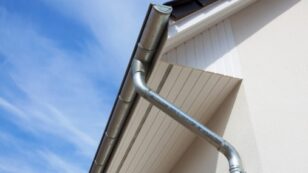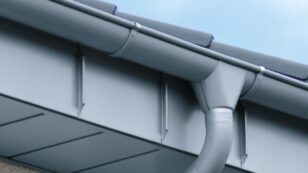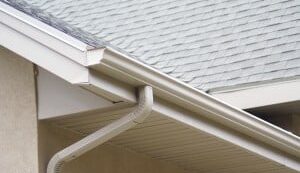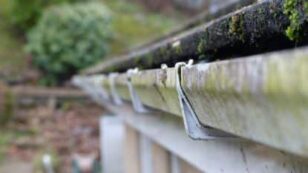
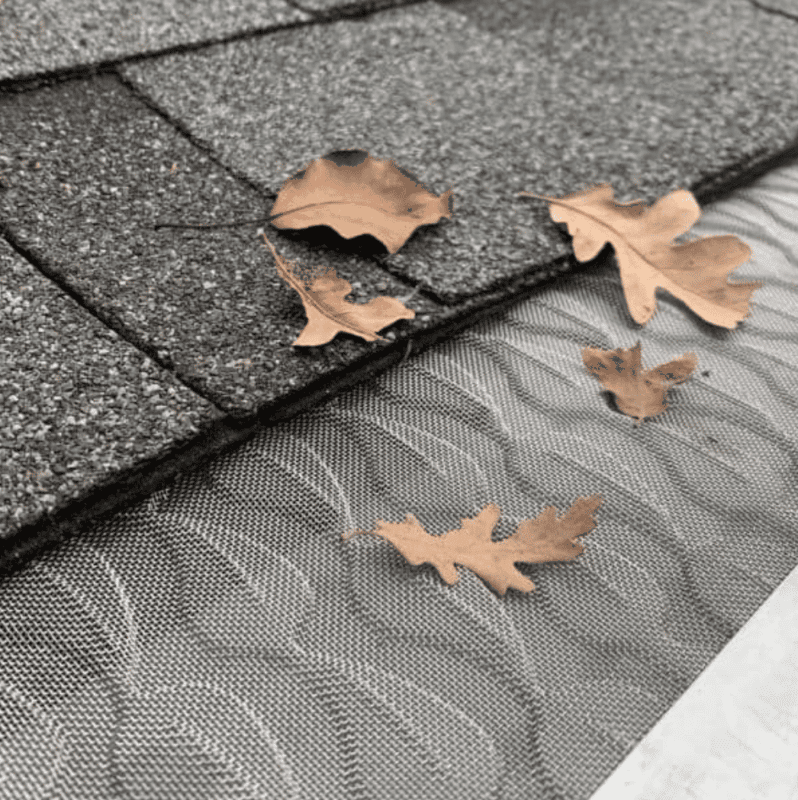
How to Choose the Right Gutter Size (2024 Homeowner’s Guide)
In this guide on gutter sizes, you’ll learn:
- Why do gutters need to be sized properly?
- What size gutters are right for your home?
- How do you calculate gutter size?
- How does the amount of rainfall affect gutter size?
This guide has helped many homeowners determine what gutter size is best for their home and understand which factors play an important role in determining the gutter size. Enter your zip code below to receive a personalized quote on gutter options near you.
Each product and or company featured here has been independently selected by the writer. You can learn more about our review methodology here. If you make a purchase using the links included, we may earn commission.
Your gutter system is pivotal in keeping your home safe from water damage caused by roof runoff from rain and melting snow. However, conducting runoff adequately and safely isn’t just a matter of having gutters at all — you also need to make sure that your gutter system is properly sized for your home, your roof, and the climate in your area.
In this guide to sizing gutters properly, we’ll discuss why there are different sizes for rain gutters, how to figure out which size is right for your home and more. This information should help you choose the ideal gutters for your property to ensure proper functionality in all situations.
Why Does Gutter Size Matter?
Many homeowners incorrectly believe that having any gutters at all is good enough to avoid poor roof drainage and the foundation problems that can result. In reality, the amount and timing of runoff can vary widely, and gutters come in different shapes and sizes to handle different needs.
Wider gutters can accommodate larger amounts of runoff, and K-style gutters can also collect a higher volume of water for proper management than half-round gutters.
Additionally, the downspouts you have installed on your home can affect your drainage rate. Round downspouts — typically made from PVC (a type of plastic) — are far more efficient than the rectangular downspouts you see made of aluminum.
Sizing your gutters and downspouts appropriately can help you keep runoff from pooling in the gutters and spilling over the edge. In turn, this helps avoid:
- Weighed-down gutters that can pull away from your fascia boards and cause damage to trim
- Cracks in your foundation due to increased hydrostatic pressure in the soil around your home
- Foundation leaks, which can lead to water damage
- Increased indoor humidity, which can promote uncomfortable temperatures inside as well as pest infestations

LeafFilter

Save 12% plus $250 off on gutter guards for your home. Seniors and Military save an additional 10%.
Average cost
Pros
- Made from sustainable materials
- Materials are recyclable
- Positive customer reviews
- Has green initiatives
- Competitive pricing
Cons
- Not DIY-friendly

MasterShield

Get a free estimate today!
Average cost
Pros
- Made from sustainable and/or recycled materials
- Materials are recyclable
- Lifetime and/or comprehensive warranty
- Lots of color and design options
- Has green initiatives
Cons
- Expensive products or installation fees
- Reports of clogging
- Made of non-recyclable materials
- Not DIY-friendly

HomeCraft

New customers save 30%.
Average cost
Pros
- Offers pitched/diamond designs for better flow
Cons
- No stated commitment to bettering the environment
- Some negative online reviews
- Limited availability
What Size Gutters Are Right for Your Home?
As we discussed above, determining the right size gutters for your home is a crucial step in protecting your property from potentially severe issues and damage. Figuring out what size gutters are right for your home can be a bit intimidating at first, but with a little time and dedication, the process isn’t too difficult.
An easy way to ensure you get the right size gutters is to have a professional gutter installation company install them for you. Provided you choose a reliable installer, you will get a system that is guaranteed to handle the amount of runoff your roof will generate.
We’ll break down the process for calculating gutter size below in case you prefer to do the work yourself.
Measure Each Roof Facet
First, you need to get up on your roof and measure the square footage of each roof facet that leads down to a roof edge where a gutter will be installed. On a simple gable roof, you should have two facets to measure. On a hip roof, you should have four facets to measure.
There are additional factors to consider, including the pitch of your roof and the climate in your area. However, the drainage area is the most important factor to get right, so measure, re-measure, and make sure you do calculations for triangular sections of roofing properly.
Multiply by the Pitch Factor
Next, you’ll need to determine the pitch of your roof. More severe pitches move water more quickly, creating faster drainage. Your roof pitch is the number of inches the roof rises for every foot it extends horizontally.
To determine pitch, you’ll need to get up on your roof with a tape measure and a level. Mark one foot from one end of the level with a pen or marker, and then hold the end you measured from (the “zero-inch point”) on the roof. Adjust the level until it’s perfectly level (the bubble will be in the exact center of the window). Then measure the inches from the one-foot mark down to the roof.
The vertical measurement you get, combined with the one-foot measure, will yield a vertical drop to horizontal distance ratio.
For example, if your measurement was six inches from the one-foot mark down to the roof, your roof slope would be six inches of vertical drop for every 12 horizontal inches. This would be a “6 in 12” roof slope — which can also be shown as 6-12, 6/12 or 6:12.
You can use the measurements below to determine your roof pitch factor (a steep roof will have a higher factor):
- 0 to 3 inches in 12 inches: roof pitch factor of 1
- 4 to 5 inches in 12 inches: roof pitch factor of 1.05
- 6 to 8 inches in 12 inches: roof pitch factor of 1.1
- 9 to 11 inches in 12 inches: roof pitch factor of 1.2
- 12 inches or higher in 12 inches: roof pitch factor of 1.3
Once you have your roof pitch factor for each facet of your roof, multiply it by the total square footage of that facet to get an adjusted square footage. This gives you the square footage to account for in gutter size, adjusted for roof pitch.
Consider the Maximum Rainfall
Another factor that can affect the size of gutters you need is the maximum amount of water that your gutters will need to handle. Usually, this is measured based on the amount of rain that could fall within a five-minute period, which is recorded by the National Weather Service as maximum rainfall intensity.
A higher amount of possible rainfall requires gutters that can handle more runoff quickly. If your area is around average for rainfall intensity, you can disregard this factor. If it’s below average, you can likely get away with smaller gutters, while above-average measurements require larger gutters or more efficient K-style gutters.
Sizing Gutters
Once you’ve determined the factors we’ve discussed above, you can use the guide below to figure out what size and type of gutter is right for your home.
- 5-inch half-round gutters can handle up to around 2,500 square feet of adjusted roof space
- 6-inch half-round gutters can handle up to around 3,840 square feet of adjusted roof space
- 5-inch K-style gutters can handle up to around 5,520 square feet of adjusted roof space
- 6-inch K-style gutters can handle up to around 7,960 square feet of adjusted roof space
Other Considerations for Gutter Sizing
There are some other factors that can affect the size of the gutters you need and the drainage capacity of your gutters and downspouts.
For example, K-style gutters are more efficient and can safely move more water in a shorter amount of time. Wider gutters — like 7-inch gutters or even 8-inch gutters — can also provide better drainage. These are typically only available via custom order, but they can be great for areas with heavy downpours.
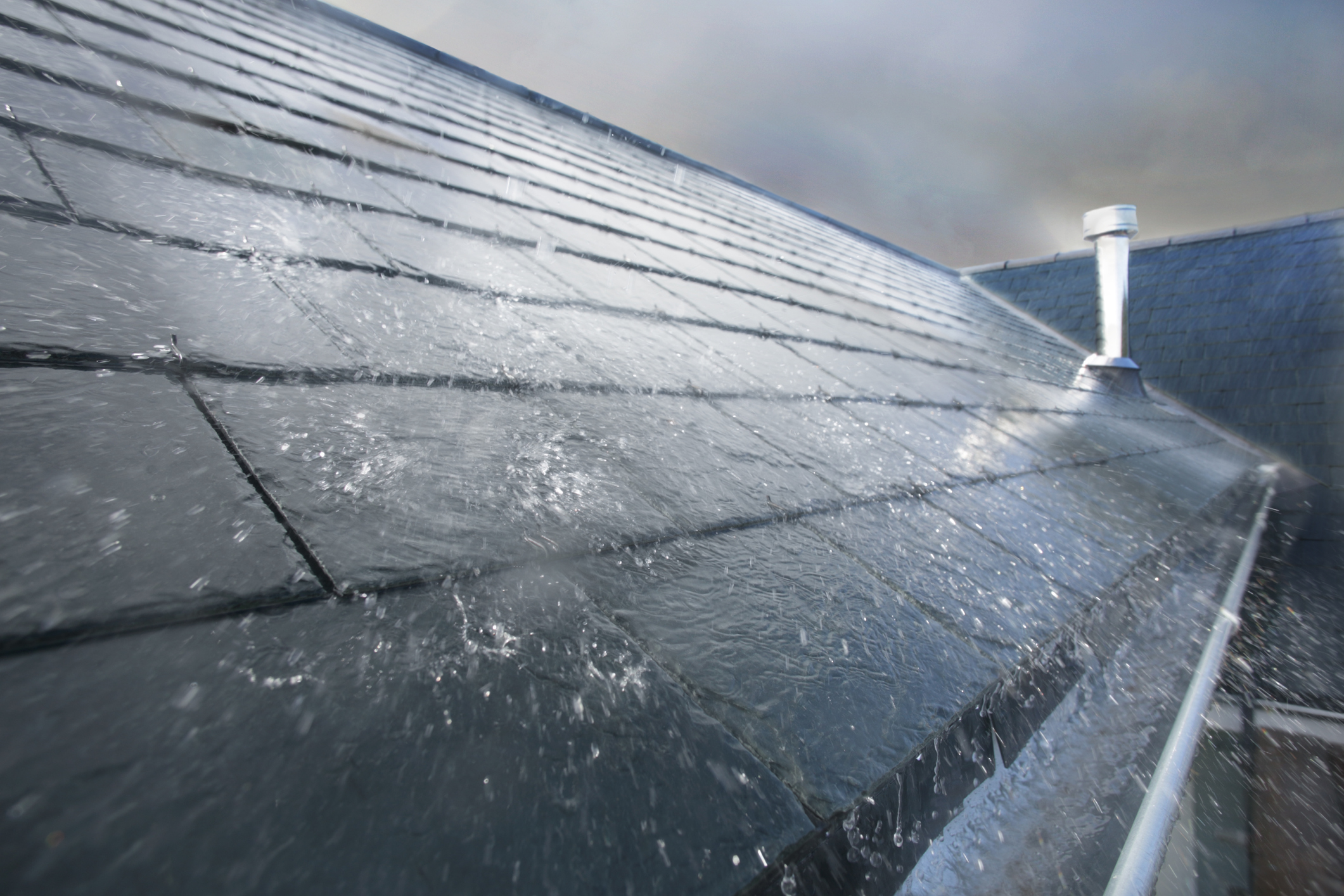
Upgrading your downspouts to round over rectangular and increasing the slope of your gutters — above the standard one-fourth inch per 10 linear feet — can also improve the drainage speed.
FAQ: Sizes of Gutters
Five-inch and 6-inch gutters are the most common widths, although gutter systems also come in 7-inch and 8-inch varieties for handling heavy rainfall. Five-inch gutters are the most common.
Yes, 6-inch gutters are more efficient and can carry a higher volume of runoff. However, in addition to the gutter size, you also need to consider the style of gutter you have, the shape of your downspouts, your downspout size and the slope of your gutters. All of these factors affect your drainage rate.
Five-inch K-style gutters are the most common size and shape. These will work well for most homes across the country.
Half-round and K-style gutters differ in their appearance and curb appeal. More importantly, K-style gutters are more efficient and can collect more water and route it to your downspouts than half-round gutters can in an equivalent amount of time — so K-style gutters are better suited for homes with a severe roof pitch or in an area where heavy and intense rainfall is a possibility.

 233k
233k  41k
41k  Subscribe
Subscribe 
